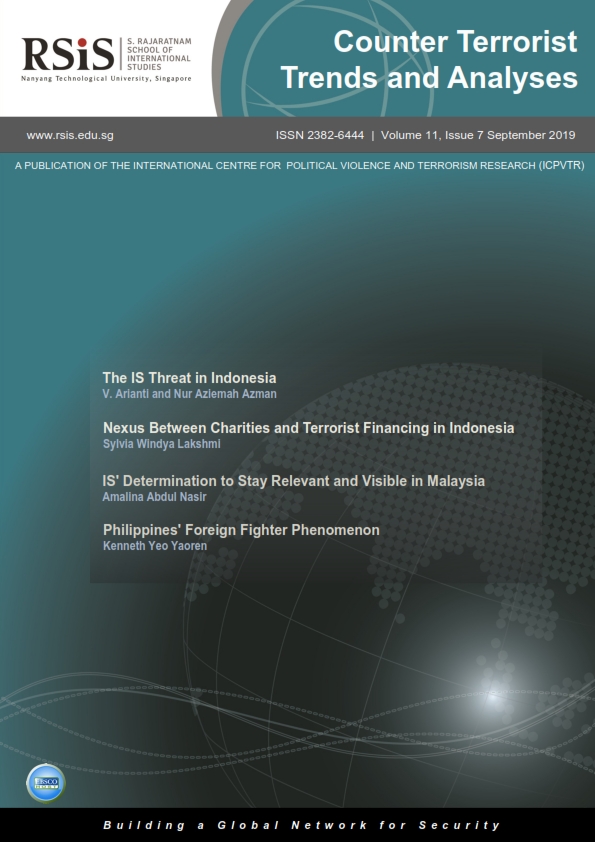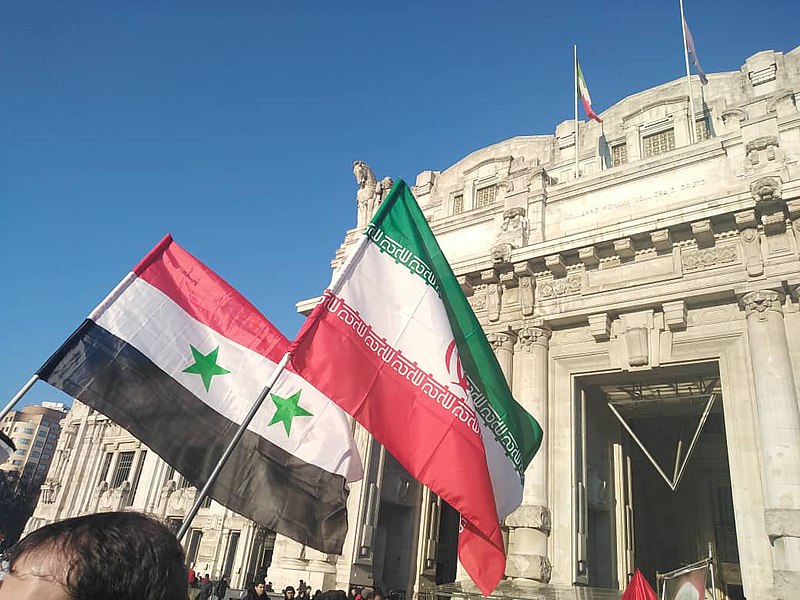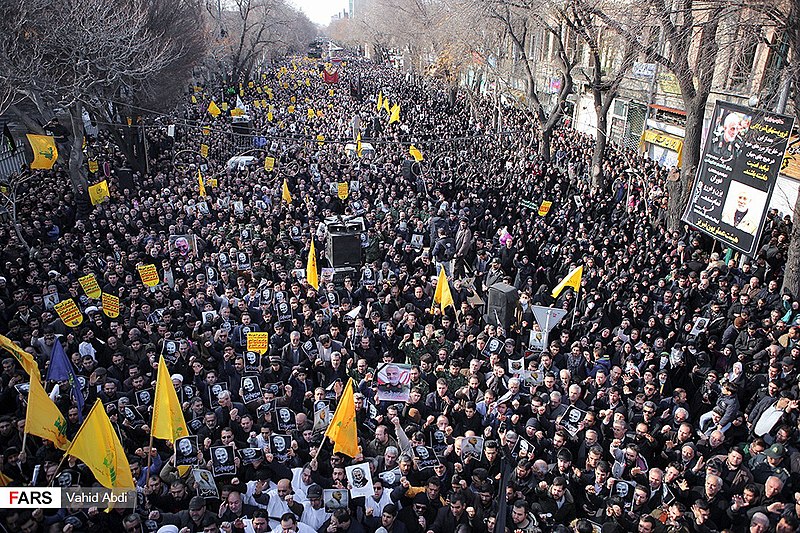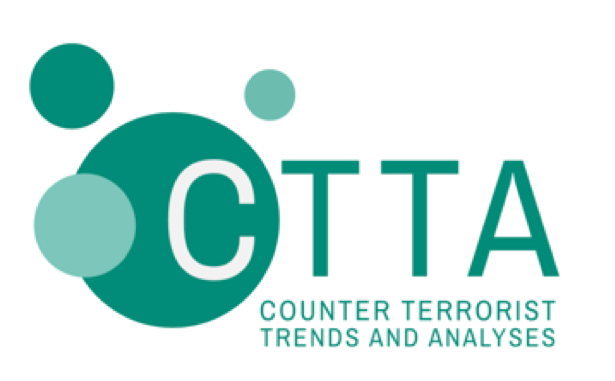
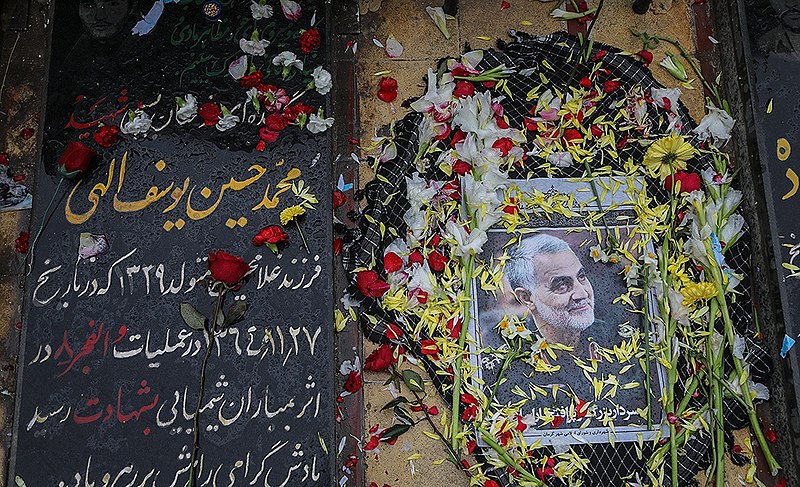
Bilveer Singh
The Soleimani killing came as a shock as it was the first major targeted killing of a senior Iranian official by the United States at a time of tense US-Iran relations. Soleimani was a key official involved in Iran’s defence and foreign policy and played a critical role in the defeat of the Islamic State (IS) as well as propping up the Bashar al-Assad government in Syria during the civil war. As such, the killing was bound to have regional and global reverberations ... more
Bilveer Singh
The Soleimani killing came as a shock as it was the first major targeted killing of a senior Iranian official by the United States at a time of tense US-Iran relations. Soleimani was a key official involved in Iran’s defence and foreign policy and played a critical role in the defeat of the Islamic State (IS) as well as propping up the Bashar al-Assad government in Syria during the civil war. As such, the killing was bound to have regional and global reverberations in the Middle East. Given Southeast Asia and South Asia’s linkages with the Middle East, how the Soleimani killing has affected both regions will be analysed in this article.
Introduction
Qassim Soleimani, assassinated in a US drone attack near the Baghdad International Airport, was a Major General in the Islamic Revolution Guard Corps’ Quds Force (QF), a specialist unit responsible for overseas military and clandestine operations.[1] Soleimani was close to Iran’s Supreme Leader, Ayatollah Khomeini. With charismatic personality and exceptional strategic skills, he played a key role in Iran’s rising influence in the Middle East and West Asia, including the defeat of the global militant group IS and in propping up the Bashar Al-Assad regime in the Syrian civil war since 2011.[2] The US President Donald Trump’s authorisation of Soleimani’s killing was bound to have serious ramifications, both in the Middle East and beyond.
Given Southeast Asia and South Asia’s multiple nexuses with the Middle East and to some extent, Iran, how both regions have been affected by the Soleimani killing will be examined in this article. From public response and statements of political leaders in both Southeast Asia and South Asia, it is clear that the escalating US-Iran tensions will impact both regions despite the initial low-key response from Iran to Soleimani’s killing. At the same time, it is also clear that the impact is far deeper and more wide-ranging in South Asia compared to Southeast Asia.
Why was Soleimani Killed?
Different US administrations before President Trump desisted from killing Soleimani, fearing that it would endanger the lives of American soldiers and civilian contractors in the Middle East along with destabilising the region.[3] Yet, in the early hours of January 3, 2020, Soleimani was assassinated in an American drone attack near the Baghdad International Airport along with 10 other people, including the deputy Chairman of Kataeb Hezbollah Abu Mahdi al-Muhandis, a pro-Iranian Shia militia. Israel is believed to have assisted the Americans in Soleimani’s elimination by providing information of the Damascus-Baghdad flight.[4] Trump justified Soleimani’s killing on grounds that he was planning to attack “four US embassies” and developing plans to attack American soldiers and citizens in the Middle East.[5] Subsequently, Trump said that regardless of whether Soleimani was involved in planning attacks against the US or not, “it does not really matter because of his horrible past”.[6]
General Implications of Soleimani’s Killing
Understanding the global impact of Soleimani’s killing, including for South and Southeast Asia, is important. In the context of historically poor relations since the fall of Reza Shah Pahlavi and rise of the Shiite cleric regime under Ayatollah Khomeini in 1979, Soleimani’s killing was bound to complicate already strained US-Iran relations.[7]
In retaliation, Iran attacked US military bases in Iraq with missiles; there were no American casualties. The Iranian threats to attack the US interests in the Middle East raised political temperatures and insecurity in the region. Even within the US, there appears to be no clear consensus that the Soleimani killing was necessary and that his death would benefit the US. Almost all the Democratic Party presidential candidates jockeying to contest upcoming elections, questioned the value of Soleimani’s assassination.[8]
Soleimani’s killing created a new anti-American atmosphere in Iraq. Soon after this development, the Iraqi parliament on January 5 voted to expel the US troops from the country for violating its sovereignty.[9] However, with potential IS rejuvenation in Iraq, any departure of American soldiers would weaken the anti-IS coalition and create an Afghanistan-like situation similar in the late-1980s that led to the return of the Taliban as the US withdrew following the defeat of the former Soviet Union.[10]
Soleimani’s killing has allowed Iran to direct public anger in Iraq and Lebanon against their respective governments.[11] Moreover, his killing would possibly undermine the peace efforts in the Gulf, especially between Iran and Saudi Arabia, including efforts to end the war in Yemen.[12] If one of the American objectives of the killing was to demonstrate to the Gulf states that Washington is in a position to protect their interests, in reality, the outcome may just be the opposite. Not only has it worsened regional tensions in the Middle East, it has also persuaded Iran to play a more aggressive role in the region through its proxies.
Implications for South and Southeast Asia
For both South and Southeast Asia, there have been immediate short-term consequences as oil prices soared immediately by 3-4 percent even though original prices were restored once bilateral American-Iranian tensions were kept at an even keel.[13] Still, both regions do expect an Iranian retaliation of some kind, probably through its proxies. At the same time, how Iran exercises its threat to acquire the nuclear option and what regional and extra-regional implications that will have remain to be seen.
Countries in South and Southeast Asia have little influence on Middle East politics. Instead, they are dependent on the region for their energy security; any crisis involving Iran or other states in the region can impact on their economies.[14] The reactions from both regions on US-Iran tensions following Soleimani’s killing stem in part from their vulnerability to geopolitical tensions in Middle East.
While both South and Southeast Asia are silent-observers in the US-Iran conflict, states in both regions were concerned that the escalating conflict would have implications beyond the Middle East. For then Malaysian Prime Minister Dr Mahathir Muhammad, Soleimani’s killing was “immoral, unlawful and comparable to the killing of journalist Jamal Khashoggi.”[15] Trump’s unilateralism has been concerning, including his withdrawal from the Joint Comprehensive Plan of Action (JCPOA) and eventually his decision to authorise Soleimani’s killing. This has led Mahathir to claim that due to Trump’s action, no one was safe anymore: “We are no longer safe now. If anybody insults or says something that somebody does not like, it is alright for that person from another country to send a drone and perhaps have a shot at me.”[16]
Iran-Saudi Tensions: A Tough Balancing Act for Malaysia and Indonesia
The Soleimani killing is likely to test the rising Iranian ties with both Indonesia and Malaysia.[17] While both Sunni majority states have reservations about Shi’ite Teheran, domestic political pressures are likely to endear Iran to them more than the US, with which both states have good ties. Iran, Indonesia and Malaysia are members of the Organisation of Islamic Cooperation (OIC) where the Saudis are also influential due to their hosting of Islam’s holy sites in Mecca and Medina, and the power of petro-dollars. From the religious perspective, there is not much sympathy for Shia Islam in both Indonesia and Malaysia but politically, Iran’s influence has been rising in both states. Both Malaysia and Indonesia host thousands of Iranians, including Soleimani’s daughter who lived in Malaysia in 2013.[18]
While both countries maintain a balance between the Saudis and Iranians, both Kuala Lumpur and Jakarta are also mindful of the Saudi control over haj quotas as well as Saudi funding of religious education, especially in Indonesia. As far as Malaysia is concerned, there has been a cooling off in Malaysia-Saudi ties since the fall of former Malaysian PM Najib Abduk Razak in 2018 and the return of Mahathir as the Malaysian Premier, who resigned recently. Mahathir’s cool attitude towards the Saudis was evident when he organised a Global Islam Forum in December 2019 in which Indonesian, Pakistani, Turkish, Iranian and Qatari leaders were invited as keynote speakers, riling Riyadh in the process as this was seen as a challenge to the Saudi position as leader of the Muslim world. Following Soleimani’s killing, Mahathir has argued that it was perhaps timely for Muslim countries to unite in the face of American aggression.
Impact on the US Image
While most states in South and Southeast Asia have close ties with the US, at the same time, Washington’s high-risk policies have troubled them. The more immediate impact of Soleimani’s killing would put pressures on both regions’ relations towards Iran and Saudi Arabia. While both regions have a majority Sunni population, Iran’s influence has been rising, especially in the face of questionable Saudi policies in the Yemeni civil war, the Khashoggi murder and Saudi’s past bankrolling of radical-oriented mosques and educational institutions in these regions. In this regard, within limits, Iran is increasingly seen in some quarters in these regions as probably the only Muslim nation willing to stand up to the US’ perceived bullying of Muslim countries. From this angle, killing Soleimani may represent a short-term tactical victory for the US and its allies but it is bound to have long-term negative strategic consequences.[19]
Many in the region also found Trump’s explanation that Soleimani was planning ‘imminent attacks’ on US interests as lacking credibility. Rather, in view of the ‘maximum pressure’ policy on Iran since Trump assumed office, many in the region saw the killing as being driven by US’ domestic politics agenda than any genuine threat posed by Soleimani. [20]
Varied Impact in South Asia
Using Barry Buzan’s concept of South Asia as a regional security complex, Soleimani’s killing can have varied impact especially in Afghanistan, Pakistan and India.[21] The biggest area of direct impact is likely to be Afghanistan. General David Petraeus, the former Central Command commander and former Director of the CIA, is on record stating that Soleimani sent him a message saying that he was in control of Iran’s policy with respect to Iraq, Lebanon, Gaza and Afghanistan”.[22] This becomes all the more important as Soleimani’s successor, Esmael Qaani, who was the Deputy Commander of QF since 1997, was responsible for operations in eastern Iran that also covered Afghanistan, Pakistan and Central Asia. In view of the potential deterioration of American-Iranian relations, Afghanistan, where many of Iran’s proxies operate, can complicate the security situation. Similarly, Pakistan has to walk a tight rope as Iran has an inside track to the significant Shia population in Pakistan (15-20 percent of its total population).[23] The QF was known to have recruited significant Shia militias in Afghanistan and Pakistan respectively for operations in Syria, the so-called Liwa Fatemiyoun and Liwa Zainabiyoun. These militias can be easily turned against the authorities in Kabul and Islamabad if they were to side with Washington against Tehran. Clearly, Iran is in a position to carry out reprisal strikes against the 12,000 American troops in Afghanistan. Iran has also been supporting the Afghan Taliban in Afghanistan due to their common anti-American policies in Afghanistan.[24] While Iran may not want to dissuade the Americans from changing their mind about a military withdrawal from Afghanistan, it is unlikely to cease its policy of weakening IS’ presence and raising the cost of American presence in Afghanistan.[25]
Unlike Afghanistan and Pakistan that share land borders with Iran, India’s position is more tenuous as it is a distant neighbour with many intertwined interests. While India has wide-ranging economic interests in Iran, in terms of geo-political competition they are more complex. Any instability in the Middle East could affect the oil flows from the Middle East upon which India is highly dependent. At the same time, through close ties with Iran, especially in terms of cooperation in the Chabahar port project, India has direct access to Afghanistan and Central Asia by bypassing Pakistan. This is something India would like to maintain to promote its economic and strategic interests. Stability in the Middle East is additionally important for India as its 9 million expatriate workers are an important source of foreign remittances.[26] Due to these considerations, India is likely to adopt politically neutral postures, when it comes to the American-Iranian conflict as well as the Sunni and Shia majority states’ divide in the Middle East.[27]
Following the US Example?
At the same time, in view of the precedent set by Trump, one cannot rule out governments in South and Southeast Asia ‘doing a Soleimani-like termination’ in both regions. South and Southeast Asia are conflict-prone regions, be they terror-oriented or separatist in nature. India has already undertaken a number of ‘surgical strikes’ against targets in Pakistan and even in Myanmar. Following the Soleimani killing, one can expect lesser restraint from India in terms of these types of strikes against what it deems as Pakistan-supported non-state threats. At the same time, India’s threat to recapture Azad Kashmir by force also falls within this purview.[28] Likewise, whether Indonesia would adopt a similar approach with regard to Papuan terrorists operating in Papua New Guinea and elsewhere remains to be seen.
Conclusion
As Iran is not in a position to challenge the US in an open conventional war, its advantages are in covert, asymmetrical warfare which the QF that Soleimani led is highly adept in. These proxy operations are likely to take place in the Middle East but their extension to South and Southeast Asia cannot be ruled out. Though militarily Iran is weak in Southeast Asia, in South Asia it has links with various militias capable of hurting American interests, especially as the US has entered into a year of presidential elections. Clearly, Soleimani’s killing will have a greater impact in South Asia rather than in Southeast Asia. The ‘Great Game’ between the US and Iran is unlikely to end with the assassination of Soleimani. Such targeted killings in the past have not helped the perpetrating state from achieving its goals and the same is likely to be true for the US. One can also expect the backlash from the killing to be worse than expected due to Iran’s adeptness in non-asymmetric warfare. Hence, due to Trump’s immediate interests, the overall impact is likely to be greater instability and uncertainty in the Middle East with possibly dire consequences for all, including South and Southeast Asia.
Bilveer Singh is an Adjunct Senior Fellow at the Centre of Excellence for National Security (CENS) at the S. Rajaratnam School of International Studies (RSIS) and Associate Professor at the Department of Political Science, National University of Singapore (NUS). He can be reached [email protected].
References
[1] Hesam Forozan, The Military in Post-Revolutionary Iran: The Evolution and Roles of the Revolutionary Guard, (London: Routledge, 2016).
[2] Philip Kowalski, “Soleimani and the United States worked together to beat ISIS,” Ozy, January 8, 2020, https://www.ozy.com/true-and-stories/not-so-long-ago-soleimani-and-the-u-s-worked-together-to-beat-isis/262477/.
[3] Ryan Pickerel, “The Trump administration is struggling to explain why the US killed top Iranian general Solemani – here’s all the shifting explanations,” Business Insider US, January 13, 2020.
[4] Toi Staff, “Israeli intel helped US carry out strike that killed Iran’s Soleimani – report,” The Times of Israel, January 12, 2020, https://www.timesofisrael.com/israel-intel-helped-us-carry-out-strike-that-killed-irans-soleimani-report/; “IRGC Man says Iran was Looking for Excuse to Flatten Tel Aviv’ after Soleimani Killing,” Radio Farda, February 9, 2020.
[5] Ryan Pickrell, “The Trump administration is struggling to explain why the US killed top Iranian general Solemani – here’s all the shifting explanations,” Business Insider, January 13, 2020.
[6] Ibid.
[7] Zehra Nur Duz, “After Soleimani killing, Iran-US tensions shift to new level,” AA.COM, January 30, 2020, https://www.aa.com.tr/en/americas/after-soleimani-killing-iran-us-tension-shifts-to-new-level/1718766; Benny Marty, “US and Iran have a long, troubled history,” The Conversation, January 17, 2020, https://theconversation.com/us-and-iran-have-a-long-troubled-history-129844.
[8] Ramzy Baroud and Romana Rubeo, “The Great Game is Afoot: Killing Soleimani Reflects US Desperation in the Middle East,” IslamiCity, January 8, 2020; Susan Page, “Exclusive: Americans say Soleimani’s killing made US less safe, Trump reckless on Iran,” USA Today, January 9, 2020.
[9] Isabel Coles and Catherine Lucey, “Trump threatens sanctions after vote to expel US troops,” The Wall Street Journal, January 6, 2020.
[10] Vivienne Walt, “Why Iraqis Are Worried About an Islamic State Resurgence After Soleimani’s Death,” Time, January 8, 2020.
[11] “Amid popular anger, Lebanon’s Hezbollah uses Soleimani’s killing to shore up shaken legitimacy,” The New Arab, January 13, 2020, https://www.alaraby.co.uk/english/indepth/2020/1/13/hezbollah-uses-soleimanis-killing-to-shore-up-shaken-legitimacy; Jane Ferguson, “Anger in Beirut as Hezbollah supporters mourn Soleimani,” January 5, 2020, PBS News Hour, https://www.pbs.org/newshour/show/anger-in-beirut-as-hezbollah-supporters-mourn-suleimani.
[12] Jason Ditz, “Soleimani Was in Baghdad on Mission for Saudi Peace,” Anti.War.com, January 5, 2020, https://news.antiwar.com/2020/01/05/soleimani-was-in-baghdad-on-mission-for-saudi-peace/.
[13] “Oil prices jump after top Iranian general killed by US,” BBC News, January 3, 2020.
[14] “FACTBOX-Asia is region most dependent on Middle East crude oil, LNG supplies,” CNBC, January 8, 2020, https://www.cnbc.com/2020/01/08/reuters-america-factbox-asia-is-region-most-dependent-on-middle-east-crude-oil-lng-supplies.html.
[15] “Dr Mahathir: Soleimani assassination is unlawful, as bad as Khashoggi murder,” The Straits Times, January 7, 2020.
[16] “Muslims should unite after Iran commander’s killing: Mahathir,” January 7, 2020, Today (Singapore), https://www.todayonline.com/world/muslims-should-unite-after-iran-commanders-killing-mahathir.
[17] James Chin, “Soleimani killing tests Iran’s ties with Malaysia and Indonesia,” Nikkei Asian Review, January 7, 2020.
[18] Dexter Filkins, “The Shadow Commander; Qaseem Suleimani is the Iranian operative who has been reshaping the Middle East. Now he is directing Assad’s war in Syria,” The New Yorker, September 23, 2013.
[19] Nirmal Ghosh, “Soleimani’s killing a tactical win, but a strategic error,” The Straits Times, January 12, 2020.
[20] Saman Indrajith, “Sri Lanka condemns assassination of Iranian General,” The Island, January 2020.
[21] Barry Buzan, “The South Asian Security Complex in a Decentring World Order: Reconsidered Regions and Powers Ten Years On,” International Studies, Vol. 48, Issue 1, (January 2011), pp.1-19.
[22] Martin Chulov, “Qassem Suleimani: the Iranian general ‘secretly running Iraq,” The Guardian, July 28, 2011.
[23] “Pakistan won’t take sides in Iran-US confrontation,” The Straits Times, January 6, 2020.
[24] Umer Karim, “Death of Qassem Soleimani: What to Expect in Afghanistan and Pakistan,” RUSI Commentary, January 24, 2020.
[25] Arian M. Tabatabai, “Iran’s cooperation with the Taliban could affect talks on U.S. withdrawal from Afghanistan,” The Washington Post, August 9, 2019; Belguis Ahmadi, Barmak Pazhwak and Michael Phelan, “Willing Rising US-Iran Tensions Sparks Afghan Proxy War?” The United States Institute of Peace, February 10, 2020.
[26] Rukmini Shrinivasan, “India was the top recipient of remittances worldwide in 2018,” The Economic Times, July 20, 2019,https://economictimes.indiatimes.com/nri/forex-and-remittance/india-was-the-top-recipient-of-remittances-worldwide-in-2018/articleshow/70310386.cms?from=mdr.
[27] Ronak D. Desai, “What The U.S. Strike On Suleimani Means For India,” Forbes, January 9, 2020.
[28] Ashraf Javed, “Indian army will be crushed if attacks Azad Kashmir: Masood,” The Nation, January 13, 2020, https://nation.com.pk/13-Jan-2020/indian-army-will-be-crushed-if-attacks-azad-kashmir-masood.



